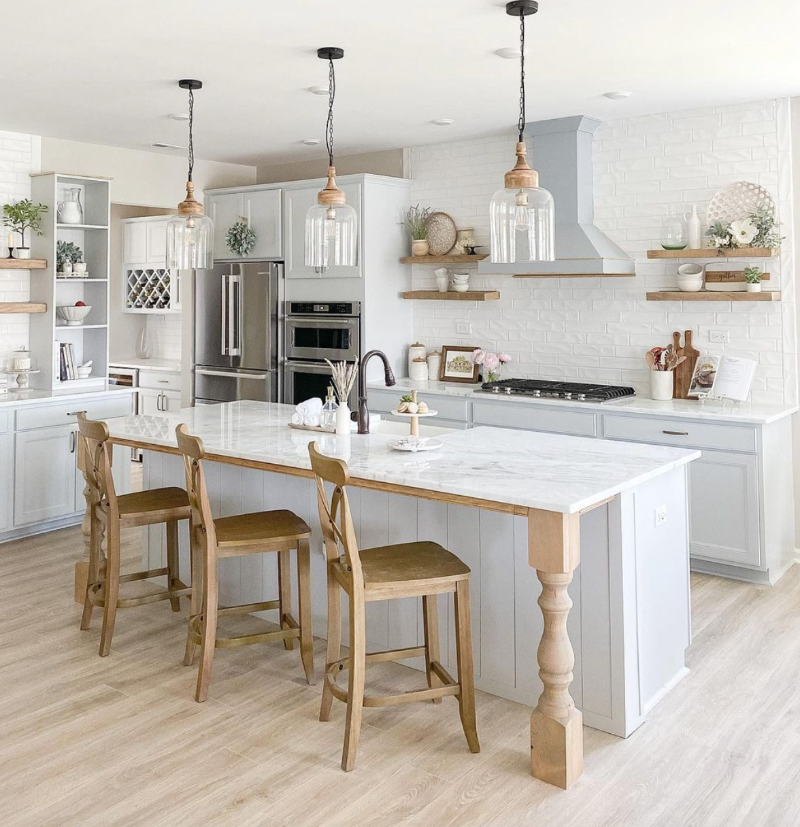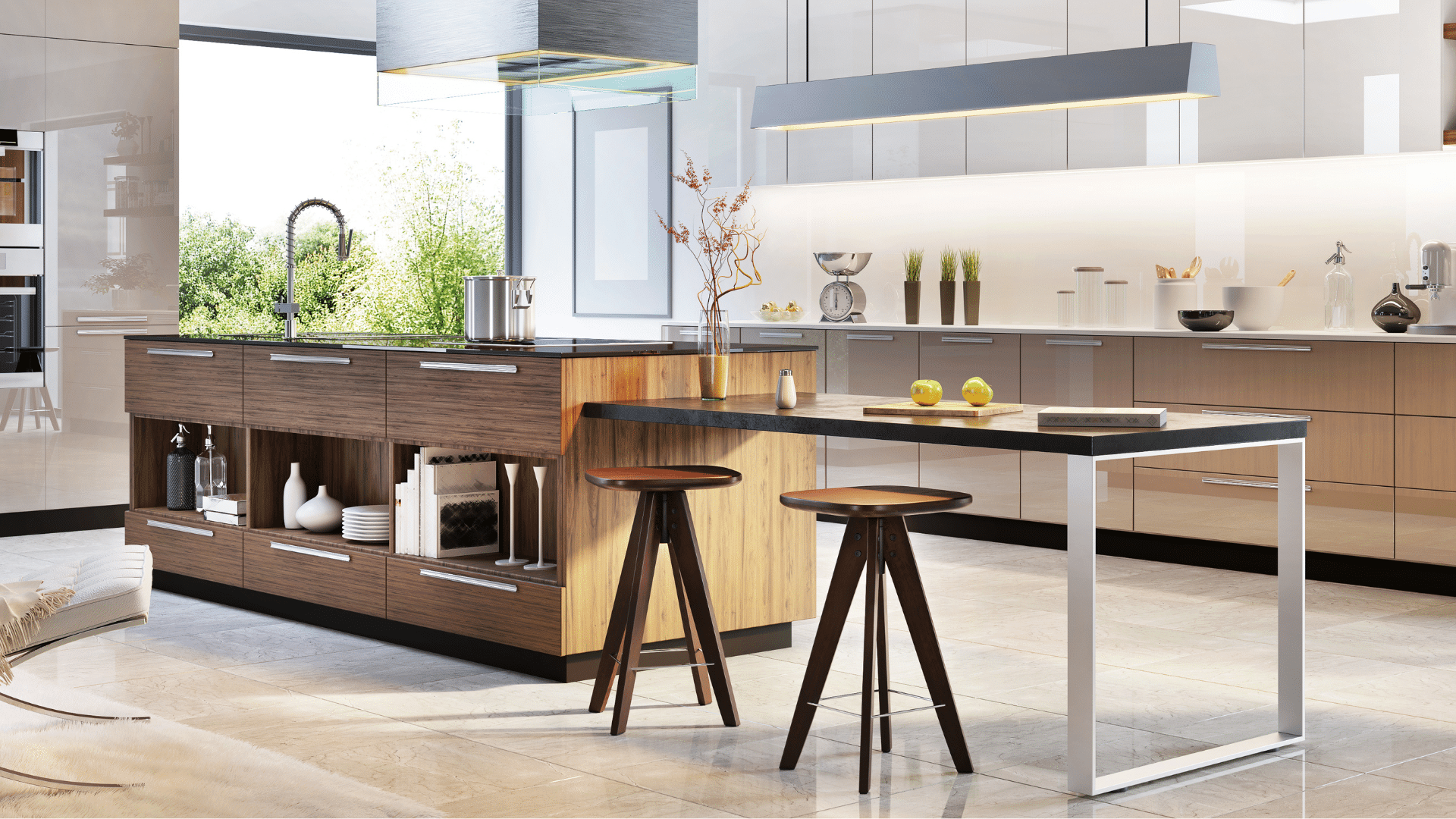Kitchen Island Legs: Include Capability and Design to Your Room
Kitchen Island Legs: Include Capability and Design to Your Room
Blog Article
Essential Tips for Selecting the Perfect Eating Table for Your Cooking Area
Choosing the perfect table for your kitchen is greater than simply an issue of taste; it necessitates a complete understanding of your space and needs. Begin by gauging your readily available room to make certain ample clearance for movement. The shape of the table plays a critical function; while rectangle-shaped tables match larger locations, rounded ones foster affection, and extendable options provide adaptability. Material choice is just as vital, with hardwoods offering sturdiness and glass borrowing a modern touch. Ultimately, the table needs to integrate with your kitchen's visual appeals and fit your household easily. What various other elements might affect this vital decision?
Measure Your Room
Selecting the suitable eating table starts with a meticulous assessment of your available area. This foundational action makes sure that the table not just fits pleasantly within the room but also matches the total format and capability of your eating location.
Take into consideration the circulation of movement around the table. It is necessary to leave sufficient area for chairs to be pulled out and for people to relocate around the table without obstruction. A basic policy of thumb is to enable at the very least 36 inches of clearance from the side of the table to the local wall or piece of furniture. This guarantees convenience of access and comfort during dishes.
Additionally, think regarding the number of people you generally delight and whether you require added area for visitors. Choosing for an extendable table can give adaptability, permitting you to fit differing numbers of diners. By properly measuring your room, you lay the foundation for choosing a table that boosts both the appearances and capability of your eating area.
Pick the Right Shape

On the other hand, round tables are excellent for smaller sized cooking areas or intimate events, as they advertise conversation by permitting everyone to encounter each other. They additionally give a feeling of coziness and can fit well in tighter rooms because of their lack of sharp edges. Oval tables supply the very best of both worlds, incorporating the length of rectangular tables with the affection of round ones, making them functional for different setups.
Square tables are one more option, especially suited for square-shaped rooms. They develop a contemporary and symmetrical look, cultivating an equivalent eating experience for all seated.
Material Factors To Consider
When selecting an eating table, product factors to consider are extremely important in identifying the table's resilience, upkeep demands, and overall aesthetic. Wood is a timeless selection, offering timeless allure and effectiveness.
Glass-topped tables provide a modern, sleek look and can make a room appear bigger because of their transparency. Nevertheless, they need frequent cleansing to stop fingerprints and smudges. Additionally, solidified glass is advised for its extra strength and security.

Last but not least, composite products like MDF click (Medium-Density Fiber board) or plywood are economical alternatives. These products can simulate the look of strong wood yet might not offer the same long life. They are normally easier to clean but can be prone to water damages if not effectively secured.
Inevitably, the option of product must straighten with your kitchen area's style, your lifestyle needs, and your budget plan constraints. (kitchen island legs)
Seats Ability and Convenience
How do you determine the right seating ability and convenience for your eating table? For a family of four, a rectangular table of 48 inches long or a round table with a 48-inch diameter is typically enough.
Comfort is equally essential. The height of the table need to preferably be around 30 inches, giving a balanced ergonomic position for seated diners. Chairs should sit elevation of 18 to 20 inches to make sure a comfy eating stance. Furthermore, take into consideration the chair click this site layout; upholstered seats and helpful backrests can improve eating comfort dramatically, particularly during long term meals.
Design and Visual Appeal
Choosing a dining table that matches your design and looks includes stabilizing individual taste with the existing decor of your eating area. The eating table is commonly the centerpiece of the kitchen, and its design must complement the general theme of the space. Whether your kitchen area boasts a modern, minimalist look or a rustic, farmhouse charm, the table you pick should harmonize with these aspects to create a natural and inviting environment.
Take into consideration products carefully; timber offers a timeless allure and can vary from rich mahogany for a traditional look to lighter oak for a contemporary feel. Steel and glass tables, on the other hand, can introduce a streamlined, commercial side to your kitchen area. Do not overlook the table's shape-- rectangular tables are timeless and functional, while round and oblong options can cultivate a more intimate eating experience.
In addition, pay close attention to surfaces and information. A distressed coating could add personality and warmth, whereas a shiny surface can add to a clean, modern-day visual. Ultimately, find out here now your eating table ought to not only healthy flawlessly into your kitchen's design but additionally show your individual design, boosting the area both functionally and aesthetically.
Final Thought
Finally, selecting the perfect dining table for a kitchen area necessitates careful examination of area, form, product, seating ability, and visual harmony. Making certain a minimal clearance of 36 inches facilitates comfy motion, while the option of shape improves spatial characteristics. Product selection influences sturdiness and style, making it crucial to straighten with the kitchen area's overall aesthetic. Inevitably, an appropriate dining table cultivates a welcoming ambience and suits the family easily, thus improving the eating experience.

When selecting a dining table, material factors to consider are paramount in determining the table's sturdiness, maintenance requirements, and total visual. For a household of four, a rectangle-shaped table of 48 inches long or a round table with a 48-inch size is usually enough.
Don't overlook the table's form-- rectangular tables are timeless and flexible, while round and oblong options can foster a much more intimate eating experience. kitchen island legs.
Report this page